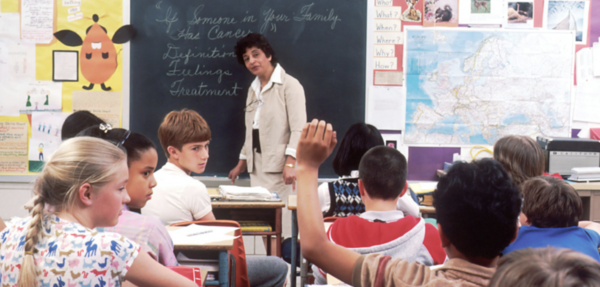Exchanging questions at home during mealtime, a teacher asking a question to the
students, teaching in pairs among students. What do these three have in common?
It uses an educational method that gives students many opportunities to question and explain. This educational method is called ‘flipped learning’.
Then, what does ‘flipped learning’ specifically mean?
The term ‘flipped learning’ enables teachers to spend more class time on student-centered instructions (such as group discussion and teachers’ man-to-man assistance) than teacher-centered instructions (such as just presenting information to students). This flipped-classroom approach maximizes learning effects by using the Internet information technology.
Then, what kind of educational method in Korea used? First, let's look over the following examples together.
At the 2010 G20 closing press conference in Seoul, U.S. President Barack Obama gave Korean reporters a question time. However, none of the reporters raised their hands. He wanted to leave the last question to the South Korean reporters, so he repeated the suggestion. Nevertheless, no one replied, and only silence filled the press conference hall. In response to this incident, people criticized the passive forms of Korean education in which students only listen and have few opportunities to speak directly. This indicates that Korean education aims for an educational method centered on ‘silence’, ‘listening passively’, and ‘a written answer’. Probably, this teaching method brought such silence on the part of the Korean reporters.
How can we improve these points?
The necessary parts of Korean education can be achieved through ‘flipped learning’ based on ‘discussion’, ‘question’, and ‘explanation’.
Next, I would like to deal with the effect of ‘flipped learning’ and foreign educational methods.
Then, what is the advantage of ‘flipped learning’?
According to the demand analysis for the teacher training for flipped learning classes by Min-Ju Kim, in 2017.
First, in the cognitive part, it can improve academic achievement. The overall achievement increases because the upper group can learn at an appropriate level and the middle group can learn in advance and participate in classes.
In traditional classrooms, teachers’ instruction has been presented as the main task, but in ‘flipped learning’, students can engage in higher-level thinking activities by learning the teacher’s lecture in advance. Of course, if students do not take classes, it isn’t to proceed smoothly. Still, in that case, it can be supplemented by examining the number of people who did not watch the video before class and then listening to the video before class.
Second, ‘flipped learning’ has a positive effect on learning motivation, self-esteem, and learning attitude. Attention, relevance, confidence, and satisfaction are the causes of learning motivation and flipped learning has a positive impact on improving the students’ concentration and confidence. The reason is the students’ willingness to solve problems for themselves and the accomplishment through various problem-solving processes.
Third, in flipped learning, teachers can help students solve problems faster through discussion instead of giving a long lecture. Also, it enables teachers to monitor each student’s learning activities, identify what students do not know through continuous communications and execute individualized education for students with learning difficulties.

Let’s take a look at foreign cases that have been effective by introducing flipped learning.
The first example was Belleville Elementary School in London, England.
There was no class in the classroom where the teacher spoke alone. When the teacher asked a question, the children went through the entire process of finding the answer to the question. In other words, children became the subjects leading the class. The students in the class said, “The teacher will support us when we want to know more. However, the teacher's help is not very much needed to find the answer. Because I think we can do it.”
The second example was Niagara Falls High School in New York, USA.
Niagara Falls High School started the pilot program for the flipped classroom model. The participating teachers created an 8 to 10-minute lecture video, posted it to various secure websites, and assigned the notes portion of the class for homework using the video, also known as a vodcast.
Niagara Falls High School Chief Educational Administrator Joseph Colburn said he envisions a school where educators can choose from various teaching methods.
“What works well in the first period may not work in the eleventh, and you need to be able to change that up. Not all models work for all kids, and this is another attempt at giving kids a way of learning material that’s not always easy,” said Colburn.
Maynard said he will continue to present the flipped classroom concept and its success at Niagara Falls High School to various schools across western New York.
Looking at foreign cases, how should education in Korea change in the future?
Currently, the Korean education is centered on teachers and provides lecture-style classes that deliver content to students. However, now it is necessary to change to a student-centered teaching method. In other words, it is essential to create many opportunities for students to participate in classes and speak and act in person, away from a one-sided educational method in which teachers inform, and students only listen. Also, at this time, the teacher would have to stay in the supervisor’s role to help.
However, it is not desirable to try to change the form of the class itself dramatically, based only on the advantages of flipped learning. This is because students will not be able to adapt to sudden changes.
Therefore, it seems necessary to naturally apply a gradual change in the learning method of Korea.

